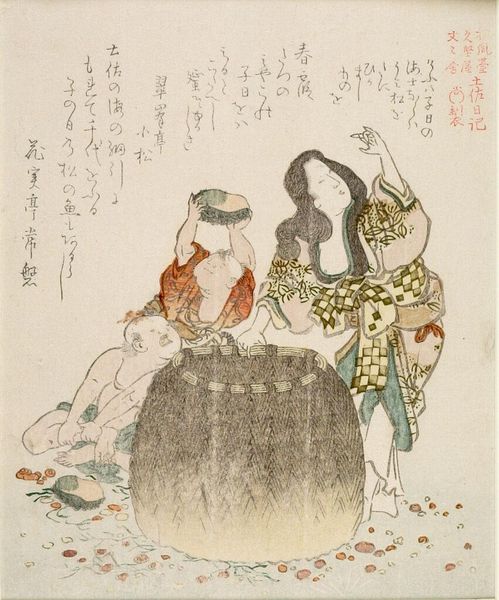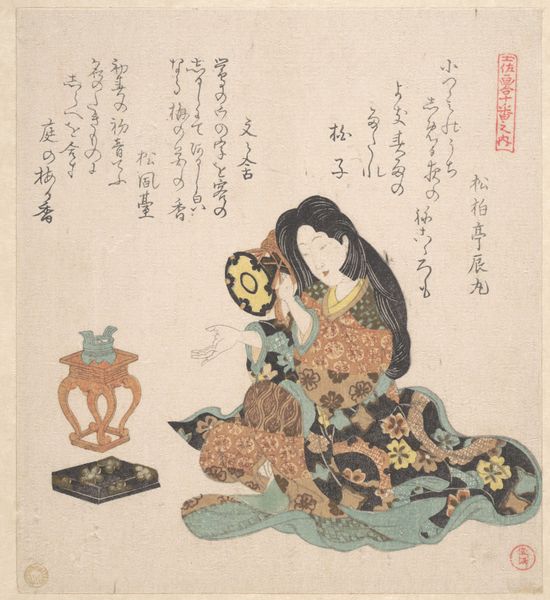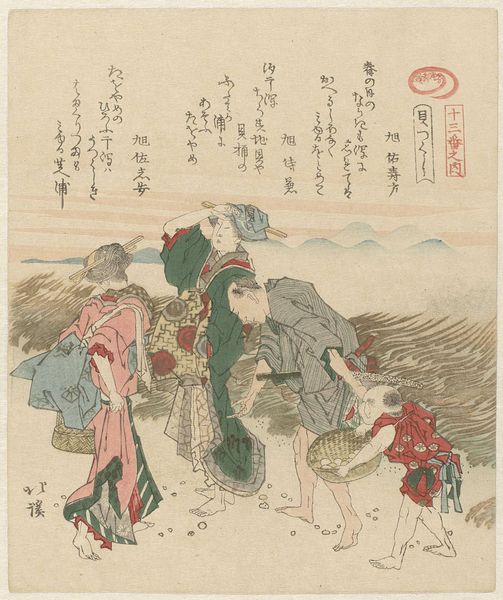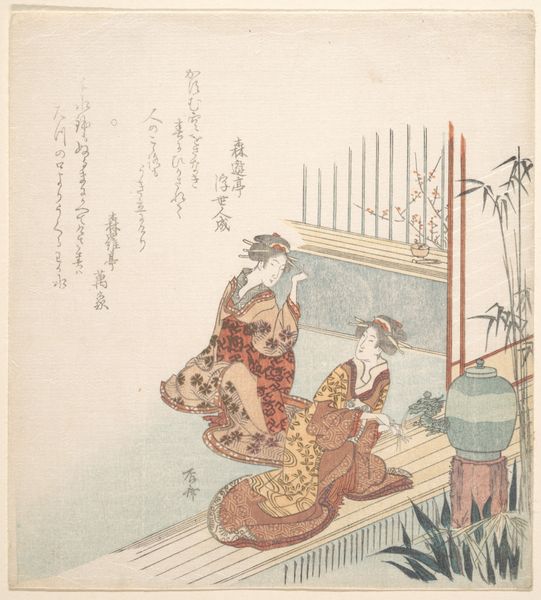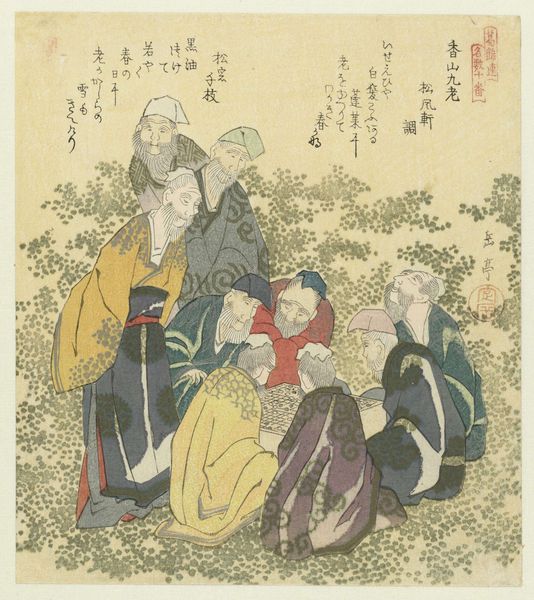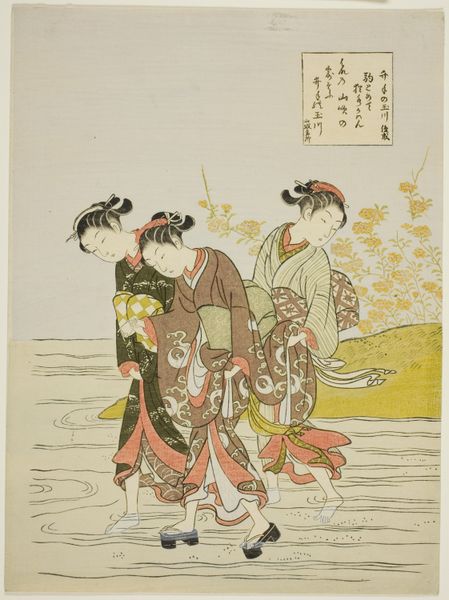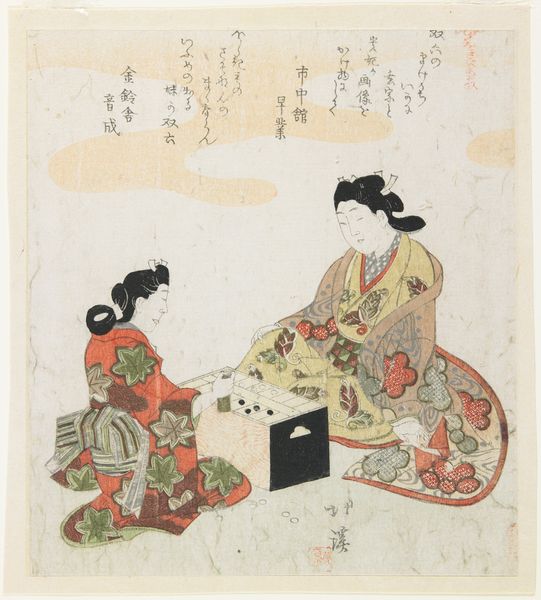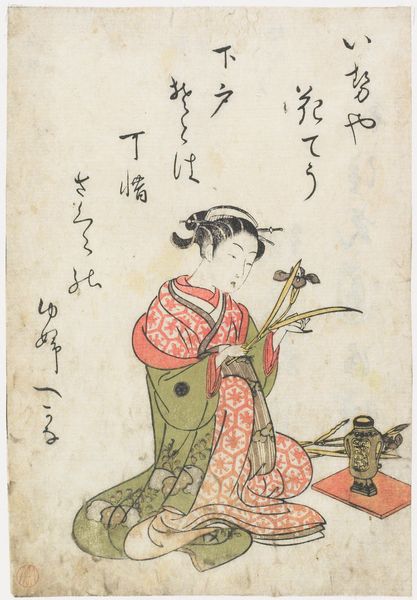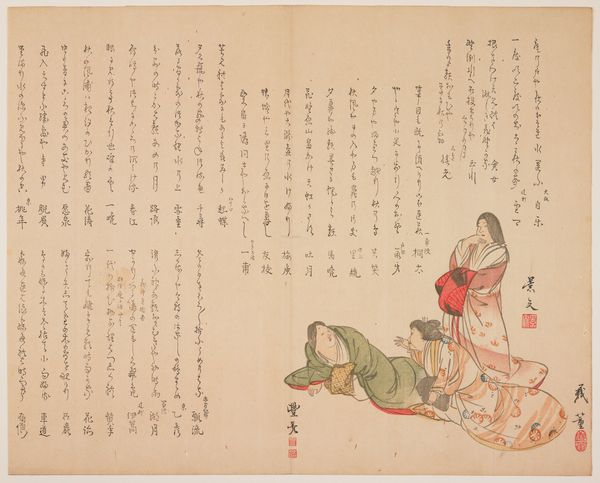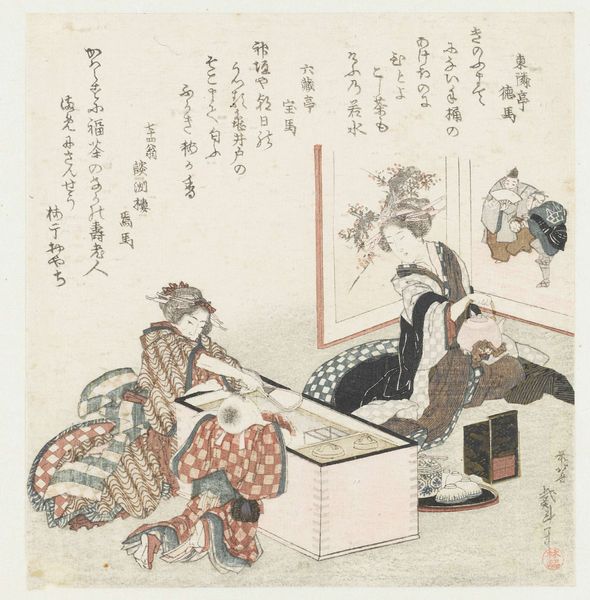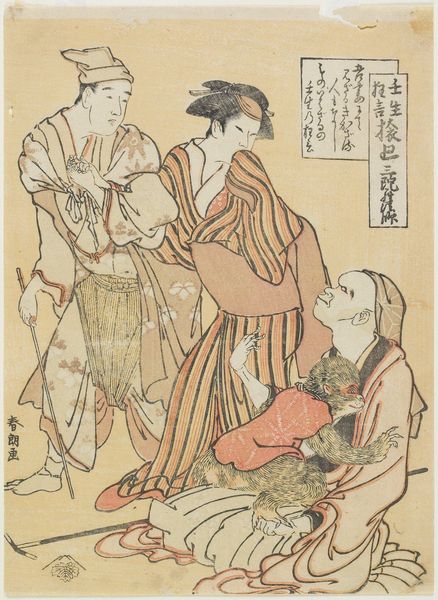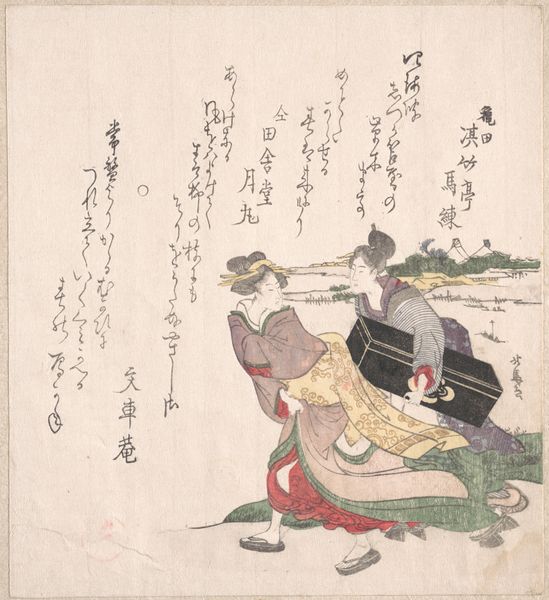
print, woodblock-print
# print
#
asian-art
#
ukiyo-e
#
boy
#
figuration
#
woodblock-print
#
genre-painting
Dimensions: 8 5/16 x 7 1/4 in. (21.1 x 18.4 cm)
Copyright: Public Domain
Curator: This delightful 19th-century woodblock print by Kubo Shunman, titled "Fisherwoman with a Basket and Two Boys," invites us into a world of ukiyo-e, the art of the floating world. It resides here at the Metropolitan Museum of Art. Editor: My first thought is how gentle the whole composition feels. There’s a sort of naive grace to it, even with the fairly mundane subject matter. The textures created by the printmaking process add so much to its overall softness. Curator: Precisely. The genre scenes typical of ukiyo-e, like this one, capture daily life, particularly that of the common people. In its time, ukiyo-e functioned as an accessible, relatively inexpensive art form, reflecting the dynamism of Edo period urban centers. They catered to emerging middle classes, offering visions of contemporary leisure and aspiration. Editor: I’m especially drawn to the basket and its contents scattered around it. The arrangement evokes abundance, and the circular forms--basket, fruit, heads--are repeated. It reminds me of earlier fertility symbols and harvest iconography across different cultures. The whole scene feels very grounded, linked to cycles of nature and plenty. Curator: It’s interesting how you relate to earlier traditions. The visual language is deeply intertwined with established motifs but also signals modernity in its production methods. Woodblock printing democratized imagery, creating wider access, as opposed to commissioned pieces accessible only to wealthy elites. Editor: But even with the more democratic method, there remains that element of artistry in rendering. I can see a story embedded in the composition, and find symbolic resonances beyond just the immediate subject matter. There are echoes of archetypal feminine and domestic roles here. Curator: Absolutely, the art serves both to reflect social dynamics of its time and to preserve longstanding cultural emblems, making ukiyo-e significant to this day. Thank you for revealing deeper layers. Editor: Thank you; considering these cultural images through the lenses of past, present, and personal narrative helps bring them to life.
Comments
No comments
Be the first to comment and join the conversation on the ultimate creative platform.
